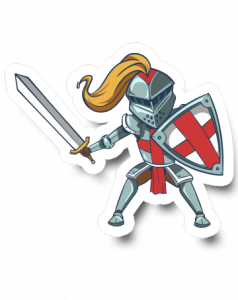
The Story of your Application
Have you ever developed an application for a client and the outcome was not as the client expected or he didn’t know how to use it?
Creating an application that meets the needs of the world or society we live in is hard work.
People’s needs are continuously changing, therefore when you start the brainstorming process you need to do some research.
When you start to brainstorm your application, like every good “writer” you have to take in mind these simple questions:
- What do I want this app to do?
- Whom am I targeting with this?
- Does the market need an app like this?
- Did anyone think of this before? (Do some detective work! The world is big and we are all different, but not so different after all, and at every given moment at least two people have the same idea.)
After all of this, of course, there are some technical questions you need to ask yourself, like:
- What kind of technology do I want to use in my app? (The times that we are living give us infinite possibilities in implementing something.)
- Long term will the technology I use be the perfect match or after a while, will become obsolete?
- Can I implement it in a manner I could update the versions of the technology I’m using?
- What kind of show-stoppers I could encounter in the implementation stage?
Good! Now you have a plan, let’s find your resources!
It’s an application, but still, you need funding and resources.
Make a plan, a proof of concept, and some low-fidelity mocks with a few end-to-end flows. (It will be impossible to do all the complete flows, math tells us this, but at least you can have some of the flows.)
It won’t hurt to make a design at least for the main page – non-technical people are more excited about what they see than about what is behind the curtains.
You are on the right track. Now that you have all of this, find some potential investors, and pitch them your idea!
Let’s imagine that in a utopian world, your first pitch worked, you now have an investor who shares your vision, loves your idea and will give you all the funding you need; time to start writing!
In the introduction, you need to engage with the readers and “lure them” with the promise that the “book” will bring a change to their life.
First of all, the user interface has to be attractive and intuitive enough to make the users feel comfortable. You don’t want to copy something already made but don’t reinvent the wheel, stick to the components and some features the users are familiar with. You don’t want them to be looking everywhere to make a simple action like delete something or other actions; the grade of frustration will only rise, and the outcome will be to delete the application and find something similar but easier to use.
Second of all, but just as important, user experience is mandatory. Again, don’t change something that they already know; for example, everybody knows how to perform a search, so stick to the more popular ones, like the ones from Google. Don’t overcrowd it with unnecessary functionality and design elements. Keep it simple!
It’s like when you are dressing up for an event, keep your outfit simple and classy, and just add some accessories to “bedazzle”.
You finished writing your “story”, but is this story what the users need?
The hard part is just starting, you have to create characters – identify the users and their needs. Ask yourself a series of questions regarding what kind of users you want to target with your application, what impact it will have on the environment, and many more.
In a way, creating an application is like writing a fairy tale.
When you have the idea for the “story”, after you fix all the administrative issues like the technology you want to use to implement the app; find someone who believes in your idea as much as you do either for financial stability or the implementation per se – you’ve created the castle! Now you have to add characters, and these are your users!
Because no two persons are 100% identical in thinking and behaving, you can create personas; since I assimilated the application with a tale, the personas will be fairy tale characters with questions you need to put yourself for different types of situations. Some of the characters and situations will be portrayed as villains or heroes, and each of them contains provocations that will not only help you foresee unintended consequences but also reveal opportunities for creating positive change.
The Siren
This mythical creature would lure fishermen with their singing, and keep them hooked.
The Siren is not a persona, more likely your app is and the fishermen are your users, the ones that use your app so much, almost daily. For this type of user, you have to ask yourself a few questions:
What would using your product “too much” look like?
How does your product encourage users to engage, and how does it make them easy to disconnect?
How does your product respect people’s boundaries and the other parts of their lives?
In what situation might it be inappropriate or distracting to use your product?
The Knight
The knight persona includes all the users that are super passionate about your app, and will forever pull for your app, and defend it with “the price of their lives”.
For them, you have to ask yourself these questions:
How would a community of your most passionate users behave?
What “rules of engagement” does your product rely on, and how might these be subverted?
The Leprechaun
This little guy is your lucky charm, he grants you the wish of having a smash-hit product.
Have you ever thought about the impact of having a popular app?
What happens when 2 million people use your product?
What would mass-scale usage of your product reveal or cause?
How might a community change if 80% of the residents used your product?
How could habits and norms change?
The Ruthless Dragon
What could a “big bad dragon” do to your product?
What would predatory and exploitative behaviour look like with your product?
What product features are most vulnerable to manipulation?
Who could be targeted with your product?
The seven dwarfs
Of course, you want to have a Snow White or a Cinderella as a user, but what about those cute little forgotten dwarfs?!
When you picture your user base, who is excluded? If they use your product, what would their experience be like?
Whose perspective is missing from product development?
Pretend that the opposite of your assumption about your core user is true – how does that change your product?
The Scary Witch
What is the worst headline about your product you can imagine?
What thing about your business model would concern the users most?
In what scenarios could your product cause harm or endanger people?
If your product was used opposite of how it’s intended, what does that look like?
The backstabber 
Every story has a character that at some point is going to betray the main character; Othello has Iago, Lord of the Rings has Gollum, Arthur has Lancelot, and many more betrayers through the fairy tale world, it’s difficult to give this character a singular face.
In this case, in the analogy of your application with a book, the backstabber persona is the failure of your application, some features that you didn’t take in mind when creating them and made the users lose their trust in the app.
What could cause people to lose trust in your product?
What could make people feel unsafe or exposed?
What mechanisms are in place for listening to your users?
How will you recognize larger patterns in feedback so that actions can be taken?
There are many other “characters” or fairy tales personas like White Rabbit, Unicorn, Fairy Godmother, or the most prized “possession”, the Princess; also the mythical product world has many side stories where you can create your heroes or villains inside your product when you have defects, regressions or features that don’t work, but this is a tale to relate another time.
We need to ask ourselves these questions at the very beginning to identify more of the end user’s needs. It’s not an easy task to do, at some point, you will have to roll the dice and implement the app, and then make the adjustments needed to include as many desires of your users.
There are a lot of questions to ask yourself, and also a lot of work to do to make something meaningful and potential success. Like everything in this world, nothing comes easy.

